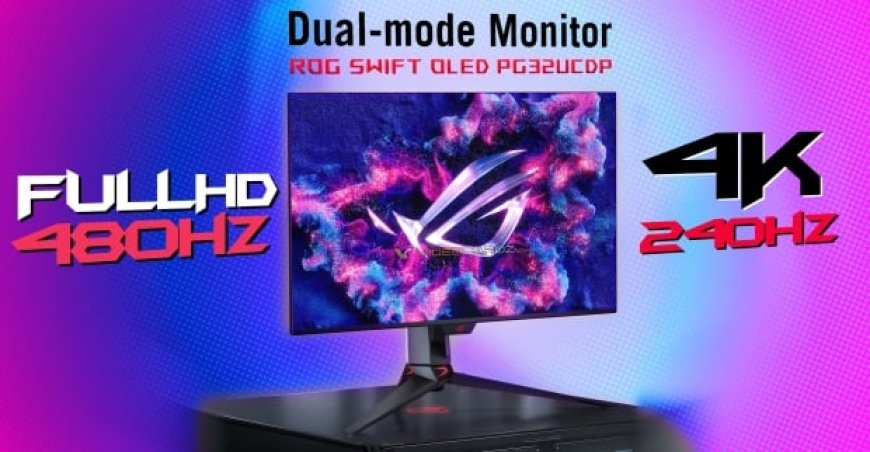VESA Updates Adaptive-Sync Display Standard to 1.1a for Enhanced Gaming Monitors
In anticipation of the CES 2024 trade show, VESA has announced an update to their Adaptive-Sync Display variable refresh certification standard. The 1.1a update is designed to accommodate the latest developments in gaming displays, including "dual-mode" monitors and those with overclocked modes. This upgrade aims to certify displays with multiple resolution-dependent maximum refresh rates, a feature that's becoming increasingly popular among high-performance gaming monitors.

The Advent of Dual-Mode Gaming Displays
The new standard, Adaptive-Sync Display 1.1a, allows manufacturers to certify displays that offer high refresh rates at different resolutions, such as 4K monitors that can also provide higher refresh rates at 1080p. This concept isn't entirely new – it's familiar in the realm of 4K TVs, where limitations in cable bandwidth often meant a choice between higher resolution or higher refresh rate. However, this concept is now being integrated into PC gaming displays to allow for higher refresh rates at lower resolutions, catering to the demands of avid gamers and PC enthusiasts.
Certification and Testing Criteria for Dual-Mode Displays
The updated standard includes certification testing criteria and branding to support and promote these dual-mode displays. It doesn't change the testing criteria for existing 1.1-certified monitors but outlines how manufacturers can get both modes certified. For instance, a hypothetical 4K display could offer a 144Hz maximum refresh rate at 4K and 280Hz at 1080p. To qualify for dual-mode certification, VESA requires the high-resolution mode to support a maximum refresh rate of at least 144Hz and the high-refresh mode's resolution to be no lower than 1080p.
Also Check AMD Readies for Ryzen 8000G APUs with AGESA 1.1.0.1 BIOS Update
Addressing Cable and Processor Bandwidth Limitations
One of the driving forces behind the development of dual-mode displays and the 1.1a update is the bottleneck created by display cable and processor bandwidth limitations. While DisplayPort 2.1 is incredibly fast, offering almost 80Gbps of bandwidth, the availability of source devices offering this bandwidth is limited. This constraint means that while 4K displays can technically refresh at upwards of 480Hz, the bandwidth to do so consistently isn't available, leading manufacturers to offer separate maximum refresh rates based on resolution.
Overclocked Gaming Monitors and Adaptive-Sync Certification
The 1.1a specification also adds support for what VESA classifies as "overclocked" displays, meaning monitors offering a faster mode that isn't the default factory setting. Under the updated spec, manufacturers can pursue a higher certification level if their displays pass the standard's requirements in both factory and overclocked modes. This addition ensures that even the most performance-hungry gamers can find a monitor that meets their needs while maintaining quality and reliability standards.
Anticipated Dual-Mode and Overclocked Displays
While VESA doesn't announce products, several manufacturers like LG and ASUS have been hinting at upcoming dual-mode gaming displays. For instance, LG's forthcoming 32-inch 4K WOLED display and ASUS's ROG Swift counterpart both offer modes of 4K@240Hz and 1080p@480Hz. These and likely more displays to come will significantly impact the gaming monitor market, especially given the popularity and performance of OLED technology.
Conclusion: A New Era for Gaming Monitors
VESA's update to the Adaptive-Sync Display standard marks a significant advancement in the gaming monitor industry. By accommodating dual-mode and overclocked displays, VESA is responding to the evolving needs of gamers and the technological advancements in the display market. As we move into 2024 and beyond, gamers can look forward to a new generation of monitors that offer unprecedented refresh rates and performance, thanks to these thoughtful and timely updates to the Adaptive-Sync Display certification standard.


































